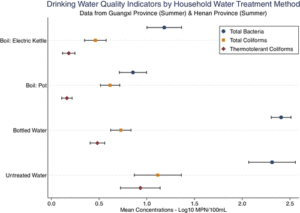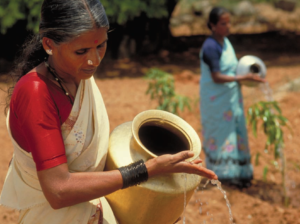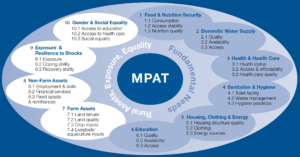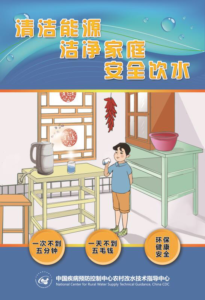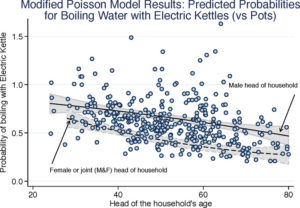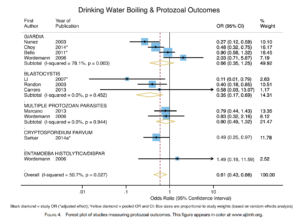Water Utilities & Intermittent Drinking Water Supply in China
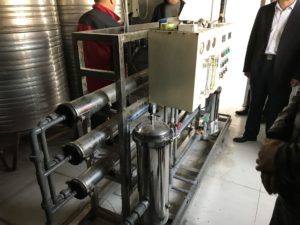 Led by our colleague, Dr. Hongxing Li at the China CDC, this project focused on the management and use of drinking water supply in areas where utilities provide piped drinking water, but for a variety of reasons it is not provided continuously (i.e., piped connections are not supplied with treated drinking water 24 hours a day, 7 days a week). This situation – that of intermittent water supply (IWS) – is relatively widespread in many low- and middle-income countries, as well as in parts of China. This research project, conducted in two Chinese provinces (Shandong and Hubei), assessed and compared management and consumer adaptation strategies, as well as drinking water quality, storage practices, and behaviors and beliefs associated with IWS, with comparison to similar communities living under conditions of continuous water supply (CWS). Water samples (from taps and rooftop storage units) and survey data were collected from 400 households across four villages (2 IWS, 2 CWS) in the two provinces. One of the main reasons the utilities in these regions provided water intermittently was to reduce the electricity costs associated with water supply pumps. Indicators of microbiological contamination were higher in samples from the IWS villages compared with the CWS villages, and we observed higher rates of bottled water use in the IWS villages compared with the CWS villages. As a result of this work, we were able to offer evidence-based recommendations utilities could adopt to reduce water-and-health related risks associated with IWS or transition to CWS.
Led by our colleague, Dr. Hongxing Li at the China CDC, this project focused on the management and use of drinking water supply in areas where utilities provide piped drinking water, but for a variety of reasons it is not provided continuously (i.e., piped connections are not supplied with treated drinking water 24 hours a day, 7 days a week). This situation – that of intermittent water supply (IWS) – is relatively widespread in many low- and middle-income countries, as well as in parts of China. This research project, conducted in two Chinese provinces (Shandong and Hubei), assessed and compared management and consumer adaptation strategies, as well as drinking water quality, storage practices, and behaviors and beliefs associated with IWS, with comparison to similar communities living under conditions of continuous water supply (CWS). Water samples (from taps and rooftop storage units) and survey data were collected from 400 households across four villages (2 IWS, 2 CWS) in the two provinces. One of the main reasons the utilities in these regions provided water intermittently was to reduce the electricity costs associated with water supply pumps. Indicators of microbiological contamination were higher in samples from the IWS villages compared with the CWS villages, and we observed higher rates of bottled water use in the IWS villages compared with the CWS villages. As a result of this work, we were able to offer evidence-based recommendations utilities could adopt to reduce water-and-health related risks associated with IWS or transition to CWS.


